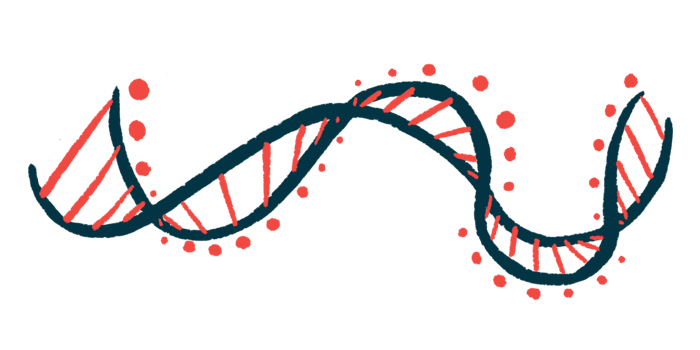DNA Repeat ‘Stop Sign’ May Be FA Therapeutic Target

DNA repeats in the gene that codes for frataxin — a protein that’s not made enough in Friedreich’s ataxia — act as a molecular “stop sign” that results in no working protein being made, a study in lab-grown cells found.
Researchers were able to offset the “stop sign” and increase the amount of frataxin being made by the cells by editing out or using an antisense oligonucleotide (ASO) to target the DNA repeats. An ASO is a short piece of DNA or RNA that pairs with a specific RNA molecule to control how much of a protein can be made.
The finding “not only represents a significant step forward in understanding molecular pathology [processes] of the disease but also opens completely novel and disease-specific possibilities for therapeutic intervention,” the researchers wrote.
The study, “Premature transcription termination at the expanded GAA repeats and aberrant alternative polyadenylation contributes to the frataxin transcriptional deficit in Friedreich’s ataxia,” was published in Human Molecular Genetics.
Friedreich’s ataxia is caused by changes in FXN, the gene that codes for frataxin. The gene contains a sequence of three building blocks, called GAA, that is repeated one after the other a number of times. In healthy people, this number ranges from five to 33 times. In most patients with Friedreich’s ataxia, it’s much larger — sometimes more than 1,000.
To understand how this much larger number of GAA repeats can prevent frataxin from being made, researchers in the U.S. grew cells from patients with Friedreich’s ataxia. They used fibroblasts, a type of cell of the connective tissue, which they converted into stem cells in the lab. These cells carried about 600 GAA repeats in each of the two copies of FXN.
Compared to cells from controls without Friedreich’s ataxia, those of patients with the condition made less frataxin RNA and protein.
RNA polymerase II, a special type of protein that reads the gene and makes the RNA that in turn codes for frataxin, was found at its right reading spot in both cells. However, in those of patients with Friedreich’s ataxia, it did not go past the GAA repeats.
This molecular “stop sign” put an early end to the transcription of the RNA copy of FXN. This shorter version, which the researchers named FXN-ett, was stable but didn’t allow a working protein to be made at all.
The presence of FXN-ett was confirmed in the heart, brain, and spinal cord of mice carrying more than 800 GAA repeats in FXN.
The stretch of GAA repeats is usually shorter in one of the copies of FXN than in the other. The researchers found that the amount of FXN-ett in the cells increased with the number of GAA repeats in the longest stretch, but not with that in the shortest one.
To find out whether editing out GAA repeats could restore frataxin production, the scientists used CRISPR — a sort of molecular scissors that can cut stretches of DNA. They found that editing out the GAA repeats not only greatly decreased FXN-ett, but also increased frataxin to levels similar to those of control cells. The researchers used an ASO in another experiment and obtained similar results.
“Targeting GAAs with antisense oligonucleotides or excision of the repeats eliminates the transcription impediment,” the researchers said, noting FXN-ett “represents a very attractive target for therapeutic intervention.”







